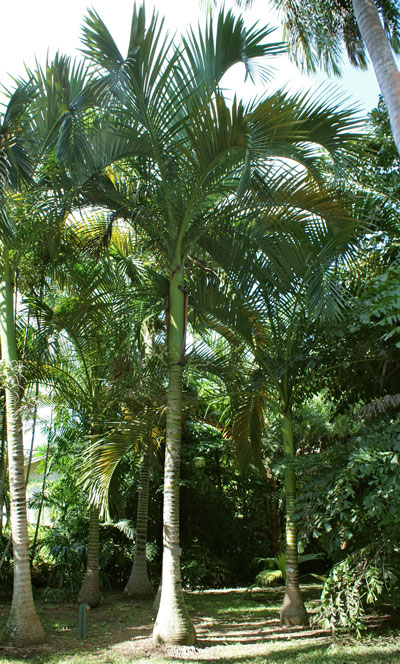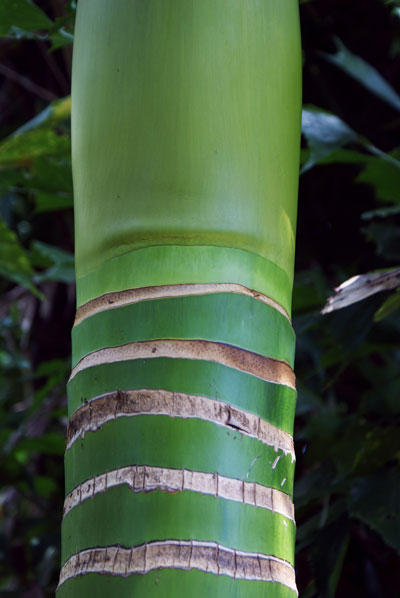There are lists of plants and animals thought to have gone extinct, only to be rediscovered happily living out their lives unseen by those who take note of such things. What a rea
son for celebration, to find out we were wrong about the end of the line for a living community! Organisms in this category are said to belong to a “Lazarus taxon” — having seemingly risen from the dead like the Biblical Lazarus.
A taxon is (more or less) a biological grouping like order, genus or species, or sometimes more loosely defined like “population.” These stories of rediscovery are fascinating and heartening. Here’s one tale of a Lazarus species from the South Pacific: the carpoxylon palm.
The carpoxylon palm ( Carpoxylon macrospermum) is endemic to the remote volcanic island nation of Vanuatu in the South Pacific, about 1,000 miles east of Australia. Broadly described in 1875 as being from “New Hebrides,” it hadn’t been seen since then, and even the originally collected specimens were lost.
Then in 1987 John L. Dowe, an Australian palm biologist, serendipitously discovered stands of living carpoxylons, allowing the misidentified original specimens to also be rediscovered, having been filed away in an incorrect location in the Natural History Museum in London. Dowe followed up with expeditions to learn more about the remaining palms, discovering that only about 32 mature specimens grew naturally, but over 100 were being cultivated near dwellings.
 |
| The rare Vanuatu Carpoxylon palm |
This palm reportedly can grow to an impressive 50 feet tall, though some sources say it can grow much taller. It begins with a swollen, bottle-shaped base that tapers with maturity. Its fronds seem to recurve in a perfect arc, an incarnation of every image of “palm” that has ever crossed your mind, resembling very much an upside-down feather duster.
The crownshaft is quite long, and of a brilliant green, not gray-green like many other palms. Carpoxylons produce a beautiful large elliptical fruit, two inches or so long, maturing to a deep red. Their descriptive binomial name translates into something like “large, woody seed.” The fruits are edible, evidently tasting like coconut.
 |
| Striking trunk and crownshaft of the Carpoxylon palm |
Originating in wet, tropical areas, this rare palm prefers its soil on the moist side, which can be maintained with mulch. It thrives in bright shade, particularly when young.
Personally, I am struck by the white ring “scars” left by old fronds contrasting with green trunk on younger specimens — it looks like some kind of tropical mint confection.
Fairchild’s specimens are flourishing outdoors in our subtropical clime, growing in the bright shade of taller palm species and in our rainforest. If you have an area that fits the bill, there’s no reason you can’t grow this rare palm at home.
Increased logging and clearing of land for agriculture and ranching in Vanuatu have decreased carpoxylon’s habitat. While it’s exceedingly rare, thanks to seed distribution and conservation efforts, a limited quantity of young palms will be available at Fairchild’s Members’ Day Plant Sale on Oct. 5.
Visit them in Vanuatu, or at Fairchild in Plots 131, 132, 152 and 71b. When you first see them, you may react like Dowe is reported to have acted upon rediscovering this gem:
“Carpoxylon,” I said aloud.
“Carpoxylon,” even louder.*
Carpoxylon indeed.
*From “Palms & Cycads,” No. 18, January–March 1988.
Kenneth Setzer is writer and editor at Fairchild Tropical Botanic Garden.
